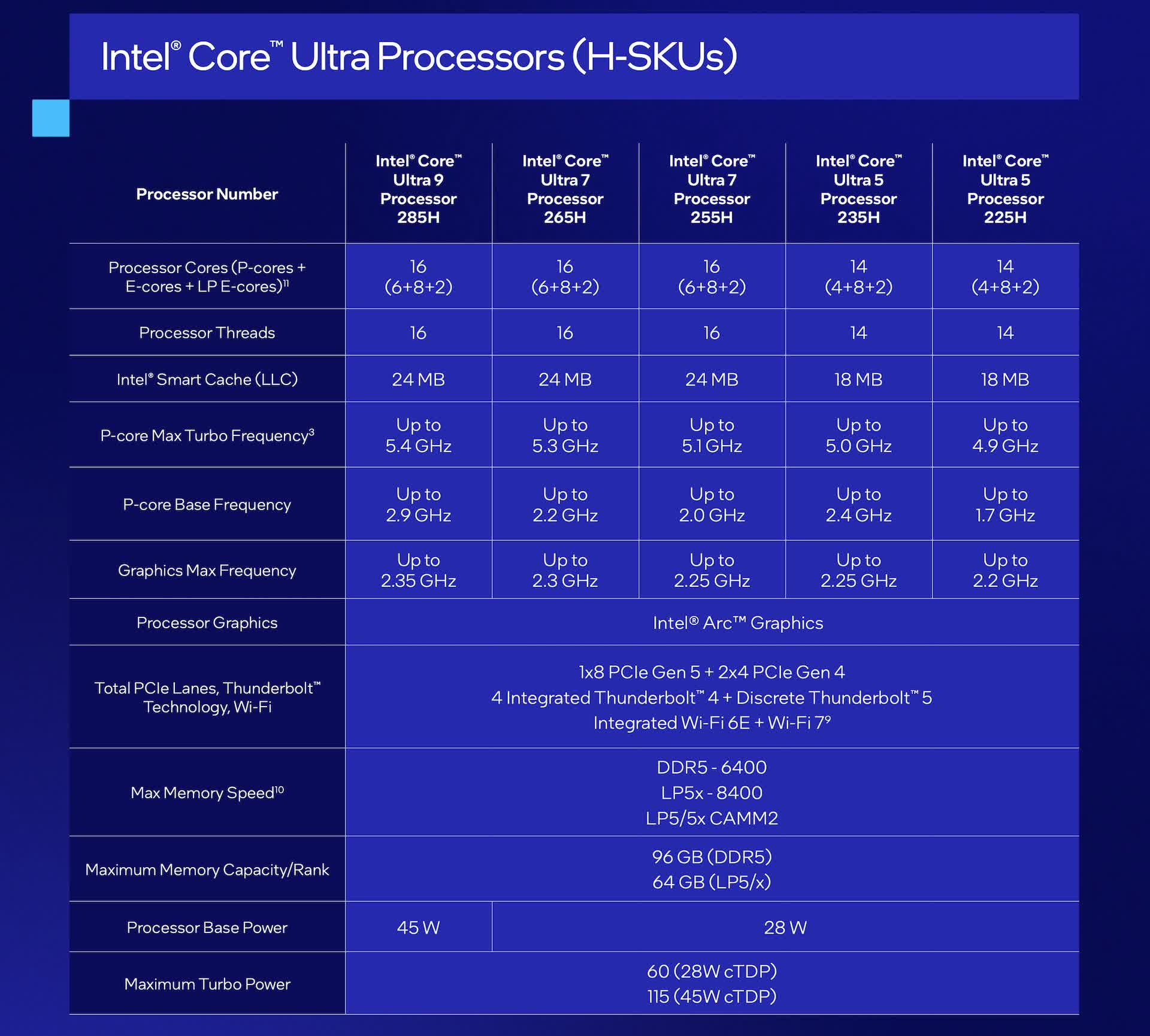Intel launches Core Ultra 200 laptop chips with a mix of architectures, CPU, GPU and NPU capabilities
What just happened? Intel has announced its latest lineup of laptop processors, the Core Ultra 200 series, at CES 2025. This new generation of chips offers improved performance and a complex array of options for manufacturers and consumers. The announcement marks a significant shift in Intel's strategy, as the company opts to use Arrow Lake for several of its new offerings while maintaining the lower-power Lunar Lake architecture for select models. The Core Ultra 200 series now encompasses a broader spectrum of processors, with Arrow Lake serving as the foundation for most of the new chips. This decision has important implications for performance and features across the lineup.While the existing Core Ultra 200V series for laptops continues to utilize Lunar Lake, the newly announced processors, including the U, H, and HX series, are built on Arrow Lake.The architectural choice between Lunar Lake and Arrow Lake results in significant differences in NPU performance. Lunar Lake chips feature a more advanced NPU, capable of delivering the 40 TOPS required for Microsoft's Copilot+ standard and upcoming Windows AI features.In contrast, the Arrow Lake-based processors in the U and H series come with an 11 TOPS NPU, only matching the capabilities of their Meteor Lake predecessors.Intel's Core Ultra CPUs employ a chiplet-based design, allowing for flexibility in combining different components. Interestingly, the Core Ultra 200U series diverges from its counterparts by incorporating older Redwood Cove P-cores and Crestmont E-cores, similar to those found in the Meteor Lake-based Core Ultra 100 series. // Related StoriesBoth the U and H series processors include an SoC tile that provides additional low-power E-cores for handling background tasks efficiently. This feature is absent in Lunar Lake and desktop Arrow Lake CPUs.The Core Ultra 200U series is designed for balanced thin-and-light PCs, offering modest specifications with two P-cores, eight E-cores, and two LP-E cores. These processors feature Intel's previous-generation Alchemist GPU architecture, with up to four cores.Moving up the performance ladder, the H-series targets performance thin-and-light PCs. These processors boast either four or six Lion Cove P-cores, eight Skymont E-cores, and two LP-E cores. Most H-series chips also include an Intel Arc-branded GPU with eight Xe cores, providing a significant boost in graphics capabilities. Intel claims that the H-series will deliver approximately 15% improvements in single-core, multi-core, and GPU performance compared to their Core Ultra 100H predecessors.At the top of the lineup sit the HX-series processors, which are essentially repackaged Arrow Lake desktop silicon designed for high-performance gaming laptops and workstations. These chips offer up to 24 CPU cores in the Core Ultra 9 variants, with eight P-cores and 16 E-cores, matching the core count of their desktop counterparts.The HX-series processors include a 13 TOPS NPU, which, although more powerful than the U and H series, still falls short of the 40 TOPS required for Microsoft's Copilot+ features.Intel announced that the U-series and H-series processors will begin shipping in February 2025. The HX-series systems are expected to be available in the first half of 2025. This staggered release allows Intel to cater to different market segments and device categories throughout the year.The decision to prioritize Arrow Lake over Lunar Lake for most of the lineup may be driven by cost considerations. Intel's former CEO, Pat Gelsinger, had previously described Lunar Lake as a "one-off" design due to the higher production costs associated with integrating RAM into the CPU package.The Core Ultra 200 series represents a balancing act between performance, energy efficiency, and manufacturing costs. While some advanced features are reserved for the Lunar Lake-based 200V series, the broader adoption of Arrow Lake across the lineup ensures that Intel can deliver competitive processors across various laptop categories, from thin-and-light ultraportables to high-performance gaming machines, albeit with varying NPU capabilities.


